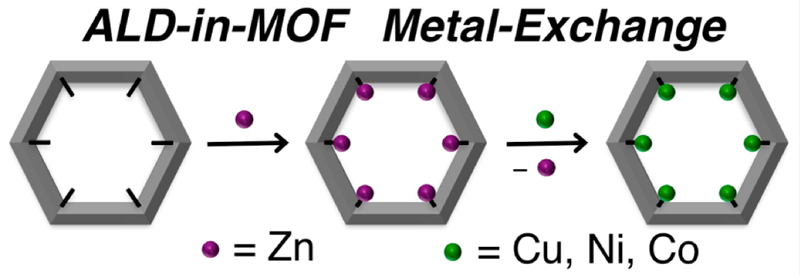

Main navigation | Main content
By Laura E. Fernandez, Ph.D.
Coffee today can be prepared in a myriad of different ways, lattes, mochas, espressos, etc.; therefore, why not decorate a metal-organic framework (MOF) in a unique way?
The source of this special brew is the Inorganometallic Catalyst Design Center (ICDC), which is an Energy Frontier Research Center based at the University of Minnesota in the Chemistry Department. The goal of the center is to promote collaboration between theory and experiment.
A recent concoction of theory and experiment was collaboration between Professor Donald G. Truhlar’s group at the University of Minnesota and professors Joseph Hupp and Omar Farha’s groups at Northwestern University.
These groups collaborated to introduce the combination (AIM-ME) of atomic layer deposition in MOFs and metal exchange (ME), which is used to install dispersed metal atoms into the MOF, NU-1000. Zn-AIM, the base ingredient in our specialty drink, has been synthesized through AIM and further characterized through density functional calculations to provide insight into the possible structure and has been shown to have four zinc per Zr6 node. Zn-AIM was then subjected to modification via transmetalation to yield uniform porous materials that present nonstructural Cu, Co, or Ni atoms. With this new brewing method the possibilities are endless.
The barista for theoretical studies was Laura E. Fernandez, Ph.D., in Truhlar’s group. The result of this collaboration was a publication in Chemistry of Materials.
Schematic Illustration of AIM-Installed Metal Atoms in the Mesopores of NU-1000 Undergoing Metal Exchange.
